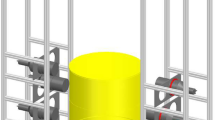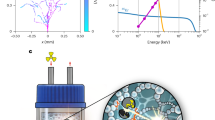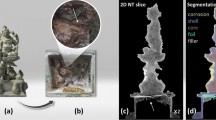Abstract
THE technique of detection and measurement of low concentrations of impurities by means of radioactivation analysis is now well established and the principles involved are well described in the literature1,2. For a large number of elements the technique is extremely sensitive and the sensitivity is limited only by the natural background radioactivity and the intensity of the neutron flux available. Some limitation on sensitivity is imposed by the neutron absorption characteristics of the material being analysed and the distance from the neutron source to the place of analysis. These limitations, however, are not generally serious. The work presented here describes the use of the foregoing analytical technique in conjunction with a chemical group separation. This procedure has been applied to the analysis of mineral specimens3 and appeared suitable for application to the analysis of single crystal specimens of germanium, in order to obtain information about the concentration of several possible impurities in the samples.
This is a preview of subscription content, access via your institution
Access options
Subscribe to this journal
Receive 51 print issues and online access
$199.00 per year
only $3.90 per issue
Buy this article
- Purchase on SpringerLink
- Instant access to full article PDF
Prices may be subject to local taxes which are calculated during checkout
Similar content being viewed by others
References
Jenkins, E. N., and Smales, A. A., Quart. Rev. (London), 10, 83 (1956).
Meinke, W. W., Anal. Chem., 28, 736 (1956).
Smales, A. A., conf. Peaceful Uses of Atomic Energy, Geneva, Paper 770 (1955).
Author information
Authors and Affiliations
Rights and permissions
About this article
Cite this article
ROBERTSON, D. Chemical Group Separation in Radioactivation Analysis. Nature 210, 1357–1358 (1966). https://doi.org/10.1038/2101357a0
Published:
Issue date:
DOI: https://doi.org/10.1038/2101357a0



